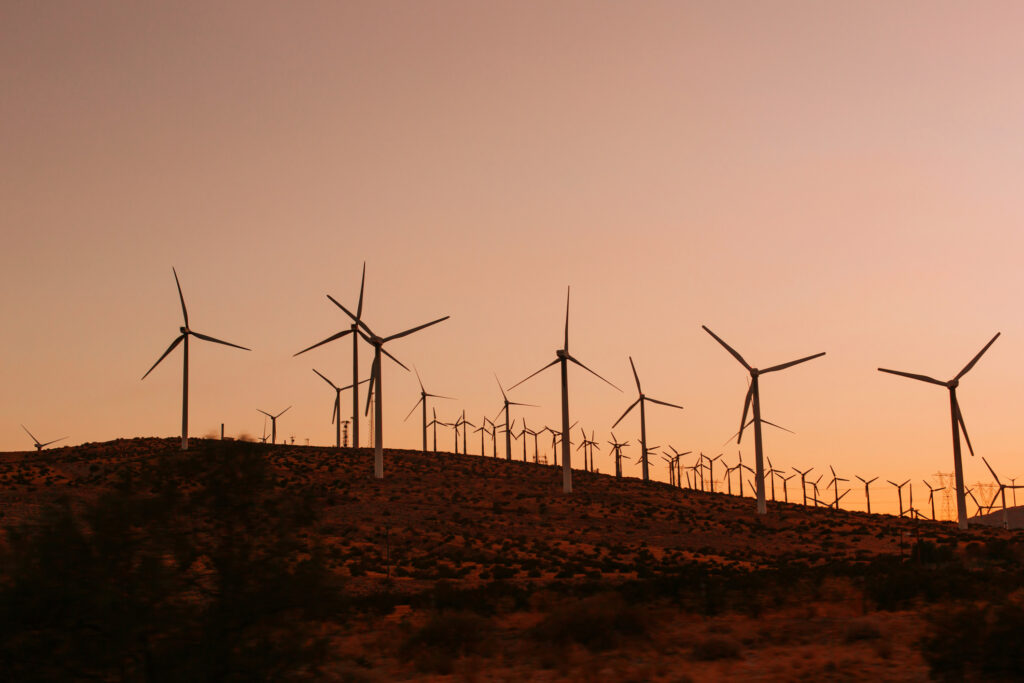A recent lead article at WebMD, “Will Climate Change Cause Food Sources to Dwindle?” should have been titled “Climate Change Will Cause Food Sources to Dwindle,” instead. It did nothing more than promote a one-sided, alarmist view of the purported threat posed to agriculture from climate change.
The WebMD article ignored the overwhelming amount of data and evidence that increased carbon dioxide levels and the modest warming the Earth has experienced thus far have been, and should continue to be, a boon for plant life in general and human food production in particular. Climate change is helping feed the world, not leading to starvation or malnutrition.
Feeding the world’s hungry ranks among the greatest challenges humankind has faced throughout its history. With the world’s population expected to top nine billion between 2050 and 2100, this challenge can be expected to grow in the coming decades.
Fortunately, the carbon dioxide humans have been pumping into the air since the middle of the 20th century has enriched plant growth, thereby contributing to record crop yields, helping to bring about the largest decline in hunger, malnutrition, and starvation in human history.
Let’s take a look at just few of the facts WebMD chose to ignore in its effort to scare its readers into believing their use of fossil fuels is leading to a farm apocalypse.
Most plant life arose when carbon-dioxide levels were much higher than they are today. Over time, the amount of carbon dioxide in the atmosphere slowly declined, to the extent that during the most recent ice age, atmospheric carbon-dioxide levels fell to dangerously low levels—just 180 parts per million (ppm). Plants begin to die when carbon dioxide reaches 150 ppm, because they are unable to use sunlight to photosynthesize food from carbon dioxide and water. After Earth emerged from the previous ice age, carbon-dioxide levels rebounded to approximately 280 ppm, still far below the levels existing when plant life began to colonize the land.
The addition of approximately 135 ppm of carbon dioxide to the atmosphere by humans—through the burning of fossil fuels, slash-and-burn agriculture, and various other actions—has helped reduce hunger immeasurably.
Since the widespread development and use of fossil fuels, world poverty and hunger have declined rapidly. Despite the addition of 3.2 billion people to the planet since 1968, poverty and hunger have fallen at a faster rate than at any time in human history.
Forty-four percent of the world’s population lived in absolute poverty in 1981. Since then, the share of people living in extreme poverty fell below 10 percent in 2015. And although 700 million people worldwide still suffer from persistent hunger, according to the United Nations, the number of hungry people has declined by two billion since 1990. Additionally, research shows there is now 17 percent more food available per person than there was 30 years ago—all during the period of purportedly dangerous climate change due to human carbon dioxide emissions.
Food abundance increased even as the amount of land devoted to agriculture declined over the same period, with former farm fields reclaimed by forests and pastures, largely due to two factors: (1) the large-scale application and widespread use of modern technologies related to agriculture, many of which depend on fossil fuels, and (2) increased carbon-dioxide levels in the atmosphere.
Crop yields have regularly set records year over year as fossil fuel use and carbon dioxide levels have increased. More broadly, as a study cited by NASA recently confirms, the Earth is greening significantly, with forests, grasslands, gardens, and areas of flowering plants expanding as carbon dioxide increases the rate of photosynthesis and improves plants’ water-use efficiency and pest resistance. The study, published in the journal Nature Climate Change, by an international team of 32 researchers representing 24 institutions in eight countries, found, “From a quarter to half of Earth’s vegetated lands has shown significant greening over the last 35 years largely due to rising levels of atmospheric carbon dioxide.”
This study confirms what several reports from the Nongovernmental International Panel on Climate Change (NIPCC) have concluded over the years: human carbon-dioxide emissions have greened the Earth, transforming some former desert regions into verdant oases of greenery, and contributed to record crop yields.
World-Grain.com reports in 2016 world cereal production broke records for the third straight year, exceeding the previous record yield, recorded in 2015, by 1.2 percent and topping the record yield recorded in 2014 by 1.5 percent. In September 2018, FarmWeekNow reported the U.S. Department of Agriculture (USDA) estimated crops in the United States would set yield records once again. USDA estimated the national corn yield would top 181.3 bushels per acre, a new record, up 4.7 bushels per acre from 2017. USDA estimated nationwide corn production at 14.827 billion bushels, the second-largest amount on record, behind only the 15.1 billion bushels produced in 2016. USDA’s soybean estimates also reached record levels of 4.69 billion bushels of production nationwide, with a record yield of 52.8 bushels per acre, up 3.7 bushels from last year.
As my Heartland Institute colleague James Taylor detailed in a recent American Thinker article, crop yields are setting records abroad as well, most importantly in developing countries, where food supplies are typically most scarce. Government data from India (2017 through 2018) and Bangladesh (2016), show rice and coarse cereal production set new record highs. The subcontinent’s growth in food production is part of a long-term trend as atmospheric carbon dioxide levels have increased. Honduras set new records in recent years for its production of staple and commercial crops, coffee, maize, rice, and wheat.
In short, as a May 2018 report by The Heartland Institute, “The Social Benefits of Fossil Fuels,” summed up, the “increase in atmospheric [carbon dioxide] concentration … caused by the historical burning of fossil fuels has likely increased agricultural production per unit [of] land area by 70 percent for C3 cereals [which include rice, wheat, oats, cotton, and evergreen trees], 28 percent for C4 cereals [which include sorghum, maize, and various grasses], 33 percent for fruits and melons, 62 percent for legumes, 67 percent for root and tuber crops, and 51 percent for vegetables.”
NIPCC’s thoroughly referenced and peer-reviewed 2014 report, Climate Change Reconsidered II: Biological Impacts, lists myriad reasons why this is so and presents the evidence that plants are benefitting from a carbon-dioxide-enriched world, such as the following:
- Results obtained under 3,586 separate sets of experimental conditions conducted on 549 plant species reveal nearly all plants experience increases in dry weight or biomass in response to atmospheric CO2 enrichment. Additional results obtained under 2,094 separate experimental conditions conducted on 472 plant species reveal nearly all plants experience increases in their rates of photosynthesis in response to atmospheric CO2 enrichment.
- Forest productivity and growth rates throughout the world have increased gradually since the Industrial Revolution in concert with, and in response to, the historical increase in the air’s CO2 concentration.
- Modest increases in air temperature tend to increase carbon storage in forests and their soils. Thus, old-growth forests can be significant carbon sinks and their capacity to sequester carbon in the future will be enhanced as the air’s CO2 content continues to rise.
- As the atmosphere’s CO2 concentration increases, the productivity of grassland species will increase even under unfavorable growing conditions characterized by less-than-adequate soil moisture, inadequate soil nutrition, elevated air temperature, and physical stress imposed by herbivory.
- Atmospheric CO2 enrichment … enhances plant growth, development, and ultimate yield (in the case of agricultural crops) by increasing the concentrations of plant hormones that stimulate cell division, cell elongation, and protein synthesis.
- Rising CO2 leads to enhanced plant fitness, flower pollination, and nectar production, leading to increases in fruit, grain, and vegetable yields of agricultural crops as well as productivity increases in natural vegetation.
- As rising CO2 causes many plants to increase biomass, the larger plants likely will develop more extensive root systems enabling them to extract greater amounts of mineral nutrients from the soil.
- Rising CO2 causes plants to sequentially reduce the openness of their stomata, thus restricting unnecessary water loss via excessive transpiration, and some plants also reduce the density (number per area) of stomates on their leaves, … [which] helps many plants use water more efficiently, helping them overcome stressful conditions imposed by drought or other less-than-optimum soil moisture conditions.
- Rising CO2 significantly enhances the condensed tannin concentrations of most trees and grasses, providing them with stronger defenses against various herbivores both above and below ground. This in turn reduces the amount of methane, a potent greenhouse gas, released to the atmosphere by ruminants browsing on tree leaves and grass.
- Rising CO2 reduces the frequency and severity of herbivory against crops and trees by increasing production of natural substances that repel insects, leading to the production of more-symmetrical leaves that are less susceptible to attacks by herbivores, and making trees more capable of surviving severe defoliation.
- Rising CO2 increases net photosynthesis and biomass production by many agricultural crops, grasses, and grassland species even when soil nitrogen concentrations tend to limit their growth. Additional CO2-induced carbon input to the soil stimulates microbial decomposition and thus leads to more available soil nitrogen.….
WebMD ignored all of these facts in its discussion of the impacts of carbon dioxide and climate change on agriculture. Why? At least some of this data and evidence would certainly be relevant to any accurate, balanced discussion of the effects of climate change on farming and food production.
One of the most ridiculous claims made by WebMD is that warming-induced crop failure was a reason for the Syrian civil war. Syria is part of an arid, desert region of the world where, for thousands of years, droughts have been regular features of life—the norm, not the exception. In fact, the entire region experienced the same drought as Syria, yet a civil war broke out only in Syria, which then spread to Iraq as ISIS got involved in trying to create a radical Islamic caliphate. Why not in Iran, Israel, Jordan, or Saudi Arabia, all of which experienced drought to various degrees?
Syria has had several uprisings against its dictatorial regime, all of which have been violently suppressed. The battle for freedom against continued tyranny, not food shortages, was responsible for the Arab Spring revolutions in Syria and other countries around the same time. As Taylor’s article points out, “United Nations Food and Agriculture Organization data show an approximately 50-percent increase in Syrian crop production since 1995. Moreover, the Arab Spring democracy uprisings in Syria and elsewhere, which climate alarmists blame on global warming, occurred in 2011, a year in which Syria produced its eighth highest crop yields in history.”
WebMD’s article was not about educating the public but instead an attempt to indoctrinate people to fear supposedly disastrous anthropogenic climate change. The article was a betrayal of the site’s founders’ vision for the medical website as a trusted source people can turn to on health-related matters.
- H. Sterling Burnett
SOURCES: WebMD; Climate Change Reconsidered II: Biological Impacts; CO2 Science; NASA; FarmWeekNow; American Thinker; The Heartland Institute





